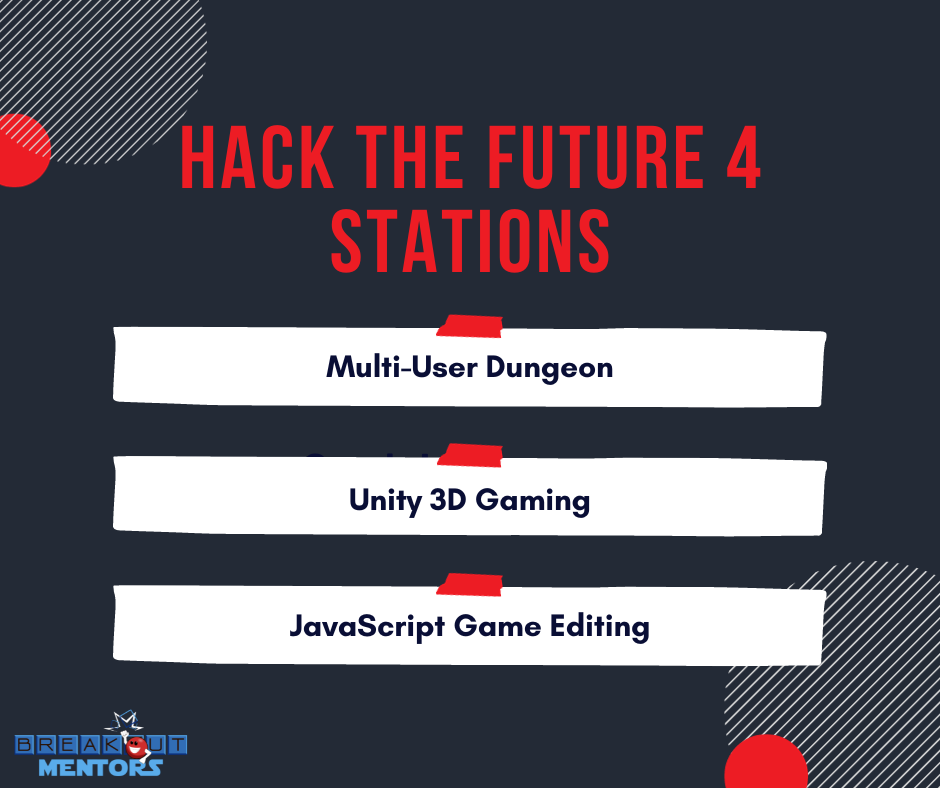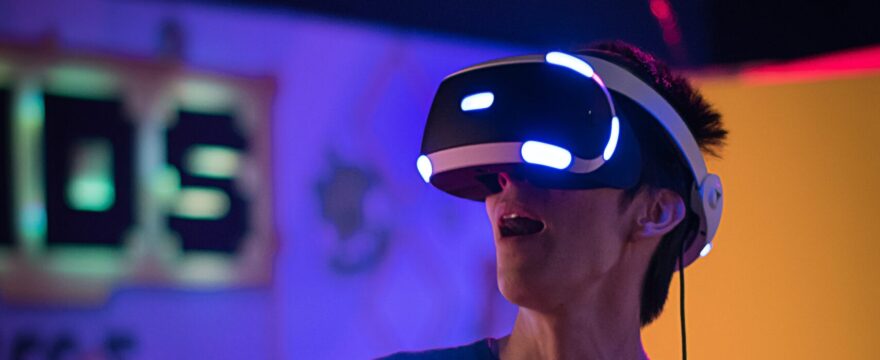Hack the Future 4 Was A Huge Success!
Last weekend at Stanford a hundred young students came together on a blazingly hot day to code. I wanted to post a brief recap to get you excited about joining in on the fun for future Hack the Future events.
There were approximately 8 different stations setup with different activities for the students to try. Each student was free to set their own schedule for the day – they could go to whatever station they were interested in, stay as long or as short as they wanted, or even work on their own projects.
What Is Hack The Future 4?
Hack The Future 4 is the latest installment of a series of hackathons pushing the boundaries of what’s possible in the world of technology. Organized by a team of passionate tech enthusiasts, this hackathon is not just an event; it’s a platform where dreams are coded into reality.
At its core, Hack The Future 4 aims to bring together some of the brightest minds in the tech world to collaborate, innovate, and create solutions to real-world problems. Unlike traditional competitions, this hackathon goes beyond the competitive aspect, fostering a sense of community and collective problem-solving.
One of the unique aspects of Hack The Future 4 is its diverse range of themes and tracks. Participants can choose from many topics, including artificial intelligence, cybersecurity, sustainable technology, etc. This wide array of themes ensures that there’s something for everyone, regardless of their expertise or interest
What Does It Look Like Participating In Hack The Future 4?

I was a roaming mentor, helping students get started on various stations. Here is a brief description of the three stations I associated with the most in the event:
Multi-User Dungeon
Students and mentors all played a text-based dungeon game – something like “you are in a drafty room with a no windows, a fireplace, and one door to the north. On the mantle is a candle holder but no candle.” You can explore the dungeon and interact with the various objects and people.
The exciting part of this station is that the environment was continuously changing. While playing the game, students could create and edit rooms, items, and actions. These were all defined in JavaScript files and they could learn how to create their own by looking at the existing code. Many students stayed at this station all day!
Unity 3D Gaming
I was shocked by the raw power of the Unity game development platform and what the young students were able to accomplish in just one day. Kids that enjoy playing video games today are likely to play Halo, not Pong. Well this was an opportunity to create a 3D game just like Halo!
Objects were created and added to the environment visually. Then scripts could be defined to handle just about anything you could want. One student created a game where a character has to jump across various platforms and get to a door while avoiding huge fireballs randomly falling from the sky!
JavaScript Game Editing
Partially complete versions of JavaScript Pong and Chess are provided to students to hack. They could finish building the remaining parts of the game or make whatever changes fit their fancy. Students were able to come in with no JavaScript experience and learn how things work just by tinkering with the existing code.
One student I worked with was able to quickly grasp how the HTML, CSS, and JavaScript combined to make the game work. He doubled the size of one Pong paddle, made the small paddle score two points for getting it past the big paddle, sped up the ball, and was well on his way to making a hit counter. All in one hour with no prior experience!
Why Join Hack The Future 4?

Hack The Future 4 is a prime opportunity for tech enthusiasts to immerse themselves in a world of innovation and collaboration. Here are compelling reasons why you should consider joining this exciting event:
Diverse Themes and Tracks:
Hack The Future 4 doesn’t limit you to a specific niche. With a wide array of themes and tracks, ranging from artificial intelligence and cybersecurity to sustainable technology, there’s something for everyone. Whether you’re a seasoned professional or a newcomer to the tech scene, you can find a track that aligns with your interests and expertise.
Learning Opportunities:
The hackathon isn’t just about competition; it’s also a learning journey. Hack The Future 4 offers workshops and mentorship sessions conducted by industry experts. This is your chance to enhance your skills, gain insights into the latest technologies, and receive guidance to elevate your abilities to the next level.
Inclusivity and Diversity:
One of the standout features of Hack The Future 4 is its commitment to inclusivity. The organizers actively encourage participation from individuals of all backgrounds, skill levels, and experiences. This diverse melting pot of ideas fosters creativity and provides a unique environment for learning from people with different perspectives.
Networking Opportunities:
In the tech world, connections are invaluable. Hack The Future 4 creates a platform for you to connect with like-minded individuals, industry professionals, and potential collaborators. Through virtual meetups, forums, and collaborative spaces, you can build a network beyond the hackathon and open doors to future opportunities.
Real-world Problem Solving:
Hackathons are grounded in the real world. Hack The Future 4 challenges participants to tackle pressing issues and find innovative solutions. This hands-on experience not only hones your problem-solving skills but also allows you to contribute to meaningful projects that can positively impact society.
Showcase Your Talent:
Hack The Future 4’s grand finale is where your creations take center stage. It’s an opportunity to showcase your talent, share your innovative solutions, and receive recognition for your hard work. Whether developing a game-changing app or addressing a global challenge, this is your chance to make a lasting impression.
Fun and Excitement:
Beyond the serious coding sessions, Hack The Future 4 is designed to be a fun and exciting experience. Engage in friendly competition, explore cutting-edge technologies, and immerse yourself in the thrill of innovation. The camaraderie and energy of the event make it a memorable and enjoyable journey.
Join Us Next Time
There were many other exciting stations which you can discover for yourself next time. To learn about the next free Hack the Future, join the mailing list at hackthefuture.org.
